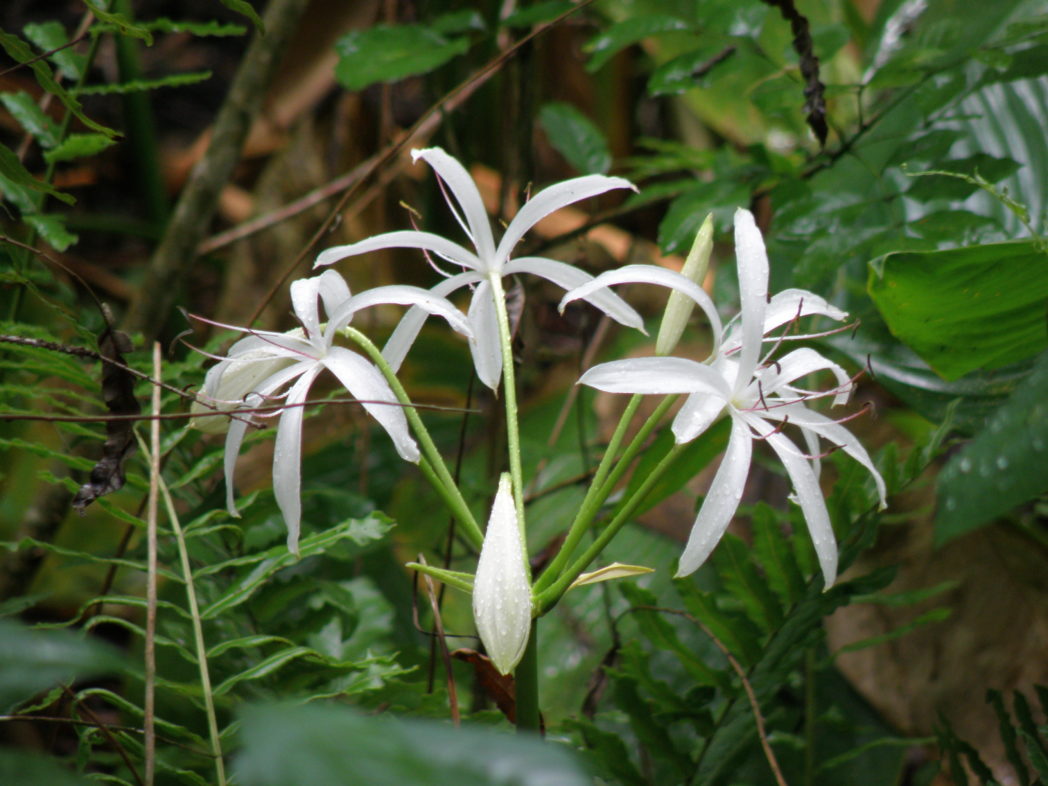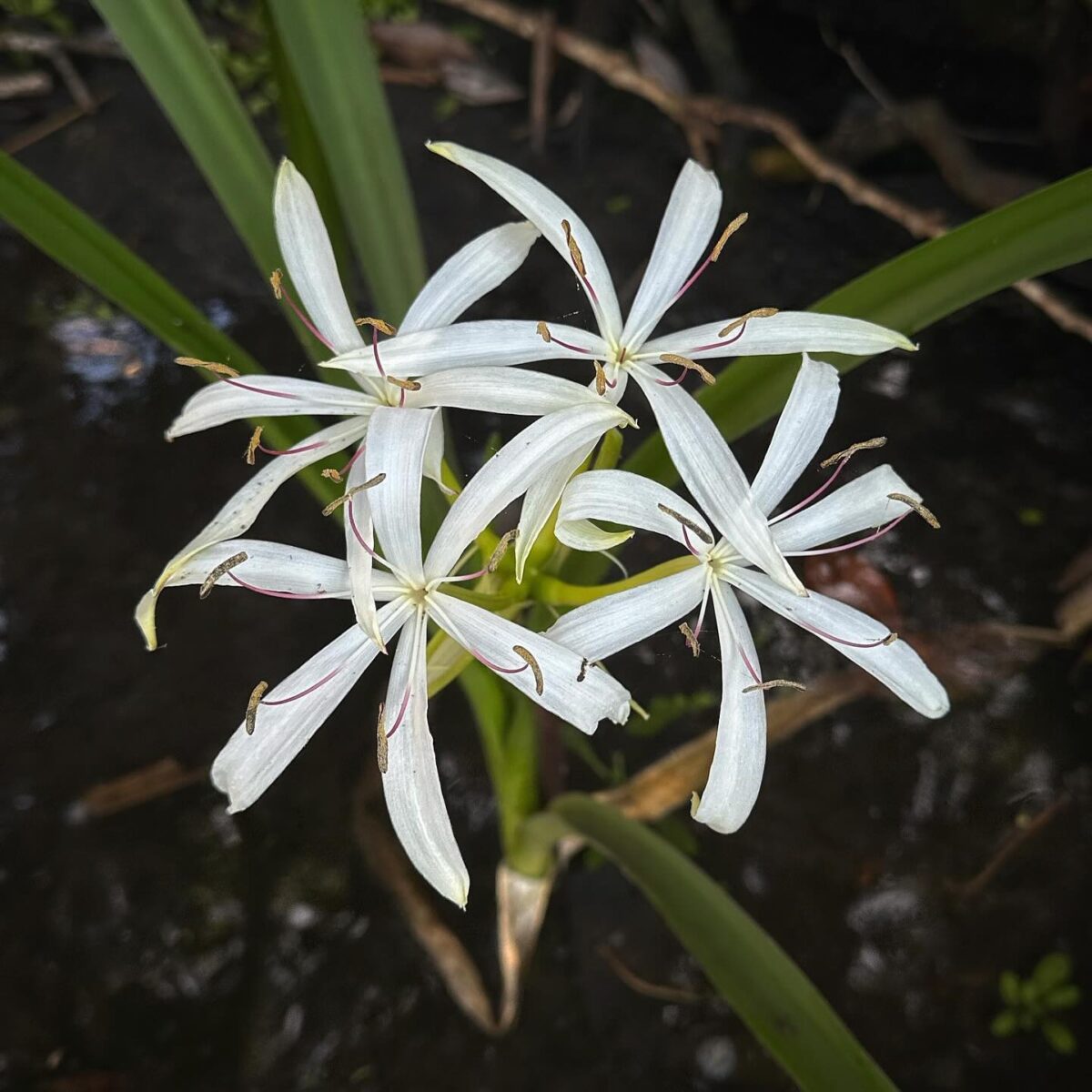String lily
Pictured above: String lily (Crinum americanum) by Stacey Matrazzo. Click on terms for botanical definitions. View post as a PDF.
Also known as seven sisters or swamp lily, string lily is an erect, emergent perennial with showy, fragrant blooms. Its large white flowers have no petals. Rather, they have long, linear to lanceolate tepals that are fused at the base, forming a tubelike bud. Once open, the tepals curve backwards, exposing long stamens topped by conspicuous reddish-purple anthers. Leaves are dark green and linear with finely toothed margins. Flower stalks and leaves grow directly from a bulb. Seeds are formed in capsules.
String lily is found in wet hammocks, marshes, swamps, wetland edges, and along streams and rivers throughout Florida and the southeast United States. Florida and the southeast United States. It is pollinated by Sphinx moths and is a larval host for the Spanish moth (Xanthopastis timais).
The bulbs and leaves are poisonous to humans, but are a favorite treat of lubber grasshoppers. It was once placed in the Lily or Liliaceae family, but has since been moved to the Amaryllis family.
Family: Amaryllidaceae (Amaryllis family)
Native range: Most central and south peninsula counties, some coastal and western Panhandle counties
To see where natural populations of String lily have been vouchered, visit florida.plantatlas.usf.edu.
Life span: Perennial
Soil: Requires wet, rich soil
Exposure: Full sun to partial shade
Growth habit: 2-3’ tall
Propagation: Seed, division
Florida regions of landscape suitability: North, Central, South
Garden tips: String lily is often confused with its cousin, the spider lily (Hymenocallis sp.) as they look very similar and grow in the same conditions. Both make beautiful additions to wet landscapes, including along retention ponds.
String lily is often available at nurseries that specialize in native plants. Visit PlantRealFlorida.org to find a native nursery on your area.
Learn more about String lily from the Florida Native Plant Society and the Institute for Regional Conservation.


